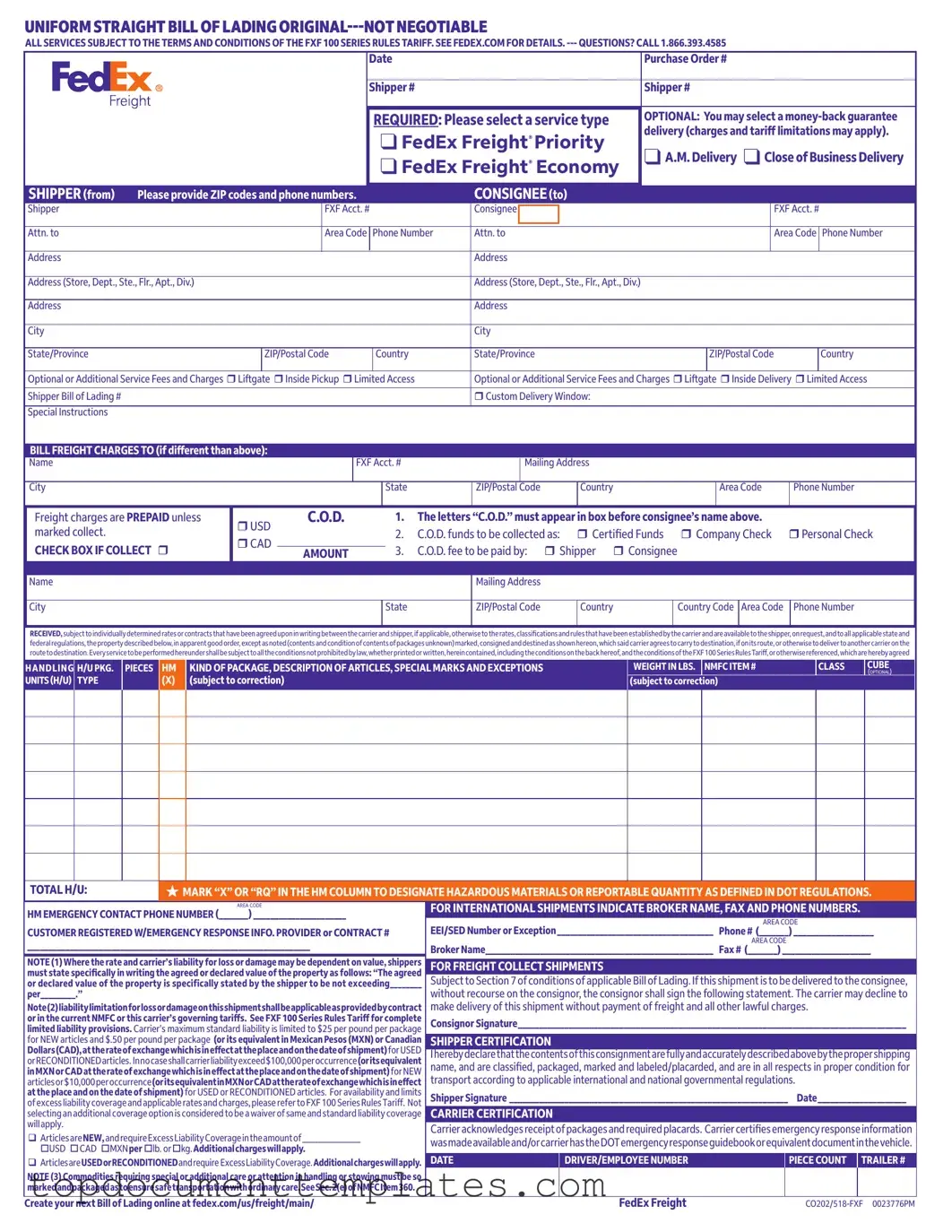The FedEx Bill of Lading form serves as a crucial document in the shipping process, outlining the terms and conditions under which goods are transported. It is a non-negotiable instrument that provides essential details about the shipment, including the shipper and consignee information, service type selection, and any optional services that may be required, such as liftgate or inside delivery. The form requires specific entries such as purchase order numbers, freight charges, and any special instructions for handling the shipment. Additionally, it includes sections for declaring the value of the goods and specifying whether they contain hazardous materials. The terms and conditions referenced in the FXF 100 Series Rules Tariff govern all services provided, ensuring compliance with applicable regulations. By completing this form accurately, shippers can facilitate a smooth transportation process while protecting their interests and ensuring that their goods are handled appropriately.
